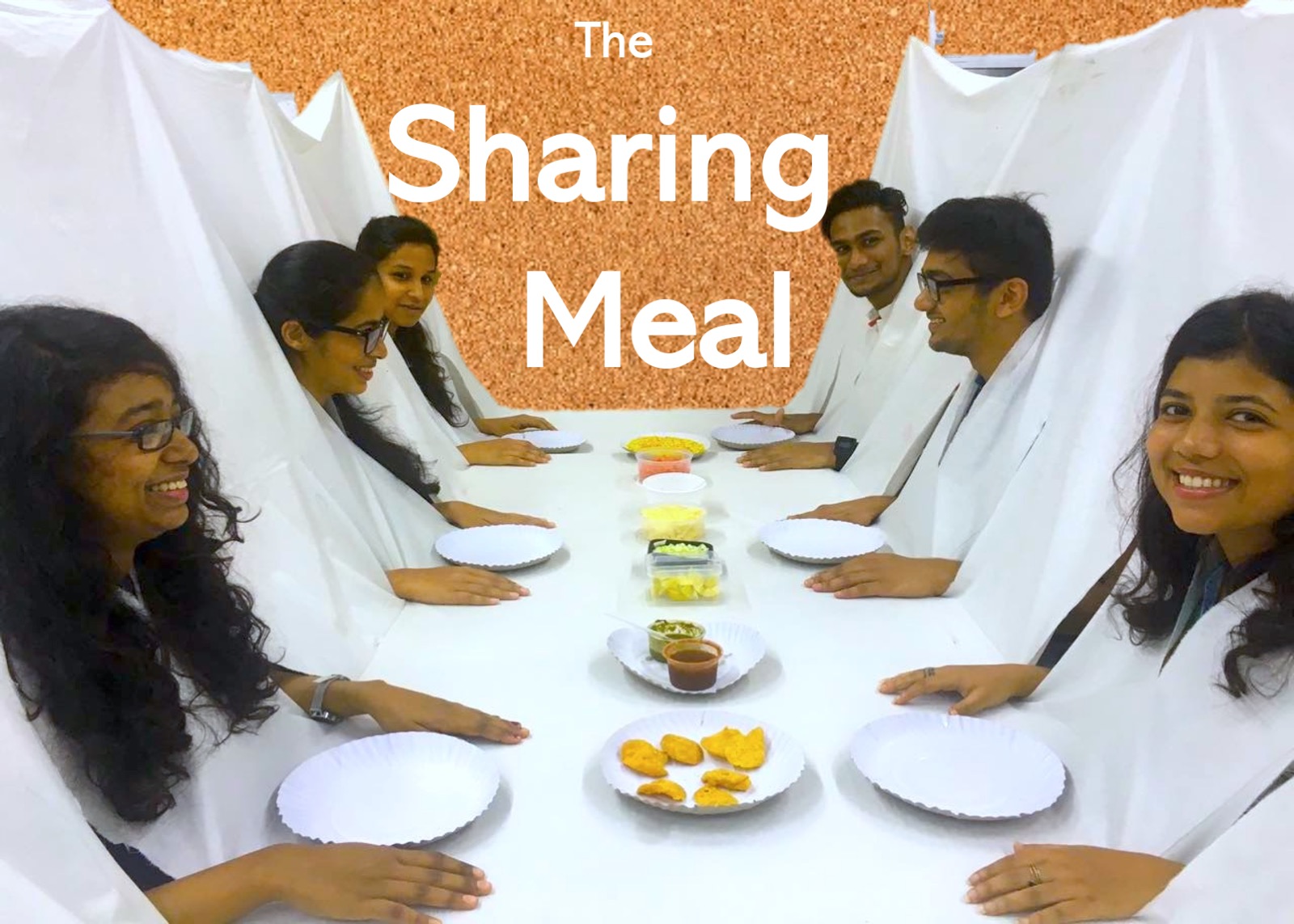Background
India is the world’s second most populated country. Spread across 29 states, 1.3 billion people have their own distinct culture, language and food habits. In major metropolitans like Mumbai, divisions in social strata and economic disparity are widespread. This manifests in everyday activities, lifestyle and every other aspect of daily life. Interaction Through Food: The Sharing Meal aims to address these issues during the everyday activity of sharing a meal.
Interaction through Food – The Sharing Meal
Based on Dutch Eating Designer Marije Vogelzang’s Christmas Dinner, the set up for the experience is simple but effective. We pull up the table linen and suspend it from the ceiling. We carefully create slits for guests to put in their arms and heads. The table cloth covers the guests’ clothing, a major indicator of socio-economic differences. Thus, it acts as an equalizer and creates a faux architectural space.
The upturned tablecloth connects diners. One physically feels tiny movements made by another through gentle tugs of cloth. Thus, all the guests are more aware of each other and think about movement. The way we serve the food is also special. We served a traditional local snack, bhel puri. Instead of serving the dish mixed altogether, we presented the different components separately. This encouraged guests to share, reach out and interact with each other while constructing snacks catered to their personal preferences.
Interaction through Food: The Sharing Meal is part of a series of food and architecture experiments conducted for research of Gastronomy and Architecture: Multisensory Experiences. Get in touch with us to find out more.









